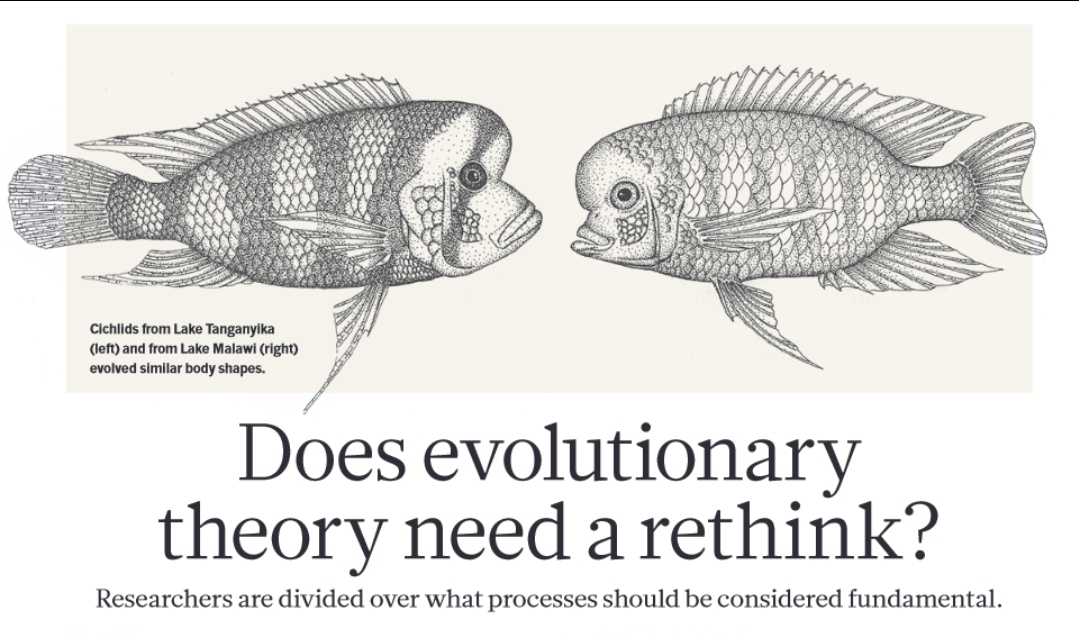Does evolutionary theory need a rethink: Review
Evolutionary theory, as largely understood today through the lens of the Modern Synthesis, posits that evolution proceeds primarily through natural selection acting upon random genetic mutations.
This framework, developed in the early 20th century, combined Darwinian natural selection with Mendelian genetics, providing an explanation for the diversity of life on Earth. However, the burgeoning field of epigenetics, the study of heritable changes in gene expression that occur without a change in DNA sequence, is increasingly prompting scientists to ask: "Does evolutionary theory need a rethink?" The intricate ways in which epigenetics influences an organism's phenotype and the potential for these changes to be inherited are presenting compelling challenges to the established tenets of the Modern Synthesis, suggesting a more nuanced and dynamic view of evolution may be necessary.
The Modern Synthesis, operates on several key assumptions. Central among these is the "central dogma" of molecular biology, which states that information flows from DNA to RNA to protein, and that heritable information is solely encoded in the DNA sequence.
Variations that are acted upon by natural selection are traditionally seen as arising from random mutations in this DNA. The environment, in this classical view, acts as a selective filter, but does not directly induce heritable variations. Furthermore, the Modern Synthesis emphasizes gradual changes over long periods, with populations slowly accumulating advantageous mutations.
Epigenetics directly challenges these assumptions. Epigenetic modifications, such as DNA methylation and histone modifications, can switch genes on or off, influencing an organism's traits without altering the underlying genetic code.
What is particularly revolutionary is the growing evidence that these epigenetic marks can be inherited across generations. This phenomenon, known as transgenerational epigenetic inheritance, means that environmental factors experienced by parents or even grandparents can influence the traits of their offspring, not through changes in DNA sequence, but through alterations in gene expression patterns.
Consider a classic example: the Agouti mouse model. When pregnant Agouti mice are fed a diet rich in methyl donors, their offspring are more likely to be thin and healthy, with brown fur, despite having the same "obese" Agouti gene as their yellow, unhealthy counterparts born to mothers on a standard diet.
Crucially, these healthy phenotypic changes, driven by epigenetic modifications, can be inherited for several generations, demonstrating a direct link between environmental input, epigenetic change, and heritable phenotypic variation.
This direct environmental influence on heritable variation stands in stark contrast to the Modern Synthesis's emphasis on random genetic mutation as the sole source of variation. If the environment can directly induce heritable changes in an organism's phenotype through epigenetic mechanisms, then evolution is not solely a process of selection acting on random genetic accidents. Instead, it suggests a mechanism by which organisms can adapt more rapidly to changing environmental conditions, potentially even in a directed manner. This introduces a level of Lamarckian-like inheritance (the inheritance of acquired characteristics) that was largely dismissed by the Modern Synthesis. While not a wholesale endorsement of Lamarckism in its original form, it indicates that some environmentally acquired traits can indeed be passed down, albeit through a different molecular mechanism than originally proposed.
The implications for the pace and direction of evolution are profound. If epigenetic changes can be induced by the environment and are heritable, then adaptation might not always require thousands of generations for favorable mutations to arise and spread. A population facing a sudden environmental shift could potentially respond more quickly through epigenetic modifications that are then passed on, providing a faster initial adaptive response. This could act as a "first line of defense," giving the population time for more permanent genetic changes to occur if necessary, or even providing sufficient adaptation on its own.
Furthermore, epigenetics blurs the clear distinction between germline and soma that is central to the Modern Synthesis.
Traditionally, changes in somatic cells (body cells) are not considered heritable, with only changes in germline cells (sperm and egg) being passed on to the next generation. However, evidence for transgenerational epigenetic inheritance suggests that environmental signals experienced by somatic cells can somehow be relayed to and influence the epigenetic landscape of germ cells, thereby impacting subsequent generations. The mechanisms of this intergenerational communication are still being actively investigated, but their existence fundamentally challenges the traditional barriers to inheritance.
Epigenetics suggests an expansion, or perhaps a "post-synthesis," of evolutionary theory. It offers a more comprehensive framework that integrates the role of environmentally induced, heritable epigenetic variation alongside random genetic mutation. This expanded view acknowledges that evolution is a multi-layered process, with different types of heritable variation contributing to adaptation and diversification.
In conclusion, the burgeoning field of epigenetics demands a serious re-evaluation of the core assumptions underlying the Modern Synthesis. The discovery of transgenerational epigenetic inheritance, where environmentally induced changes in gene expression can be passed down without alterations to the DNA sequence, directly challenges the notion that heritable variation arises solely from random genetic mutations. By demonstrating a mechanism for the direct influence of the environment on heritable traits, epigenetics suggests a more dynamic and potentially more rapid mode of adaptation than previously conceived. Integrating the complexities of epigenetics promises to enrich our understanding of evolutionary processes, moving us towards a more holistic and nuanced "Extended Evolutionary Synthesis" that fully accounts for the myriad ways life adapts and diversifies.




Comments
Post a Comment